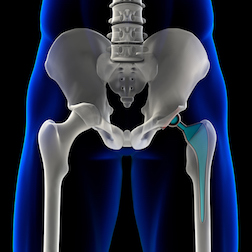 The FDA noted that the cause, in its view, was related to device design.
The FDA noted that the cause, in its view, was related to device design.The recall notice identified that the device had been approved and brought to market through an FDA 510(K) Clearance.
Many a defective hip implant lawsuit has targeted devices that have been approved through the 510(K) Clearance program, a so-called faster track to market where devices with design updates in keeping with devices already on the market and performing up to expectations, are not required to go through rigorous testing.
Common wording used to describe qualification for 510(K) Clearance is “Substantially Equivalent (SESE).” Such was the wording used by the 510(K) review panel when approving Zimmer’s Biolox Delta Ceramic Femoral Head, approved under 510(K) #K071535. There were also two recalls in association with the product, one having to do with product labelling while the other was associated with packaging impacting the sterility of the product tray contained therein.
Zimmer is no stranger to the FDA 510(K) Clearance program, having brought its Zimmer ceramic femoral heads to market through an FDA 510(K) Clearance (K905739) in March of 1991.
Stryker Orthopaedics, meanwhile, went through a defective hip recall late last year when its LFIT Anatomic V40 Femoral Heads were recalled due to higher-than-expected reports involving failures of taper locks. The femoral heads are used in association with Accolade TMZF and Accolade 2 stems, as well as stems under the Meridian and Citation brands.
Stryker initiated the voluntary recall August 29 of last year, with the official Class 2 recall created by the FDA on November 9 2016. The recalled device(s) were also approved through a 510(K) Clearance, #K022077.
Prior to the recall, the aforementioned Stryker components were targeted by a hip failure lawsuit in 2014: five lawsuits, in fact were filed in May, 2014 in New Jersey. The primary defendant in the lawsuits are Stryker subsidiary Howmedica Osteonics Corp. According to court documents, the titanium material in the hip stems does not mate well with femoral heads fashioned from a cobalt and chromium alloy, compromising the structural integrity of the hip stem.
“This combination was not compatible with human tissue and bone,” the complaint said. “Through a process of fretting and corrosion it released heavy metals into the plaintiff’s body causing severe and permanent destruction of bone and tissue. Defendant failed to manufacture the product in a manner that prevented fretting and corrosion and, in fact, manufactured the product such that it caused fretting and corrosion.”
READ MORE DEFECTIVE HIP IMPLANT LEGAL NEWS
“Defendant failed to adequately design and manufacture the device to insure that it would not fret, corrode, erode, deteriorate and induce severe metal toxicity in patients,” the Direnzo complaint – in similar fashion to the other complaints filed – stated.
The hip replacement lawsuits were Ekholm v. Howmedica Osteonics Corp., Case No. L-4709-14; Hansen v. Howmedica Osteonics Corp., Case No. L-4704-14; Rabbottino v. Howmedica Osteonics Corp., Case No. L-4703-14; Lamir v. Howmedica Osteonics Corp., Case No. L-4702-14; Direnzo v. Howmedica Osteonics Corp., Case No. L-4696-14; in the Superior Court of the State of New Jersey, County of Bergen.

READER COMMENTS
CAROL MANIACI
on